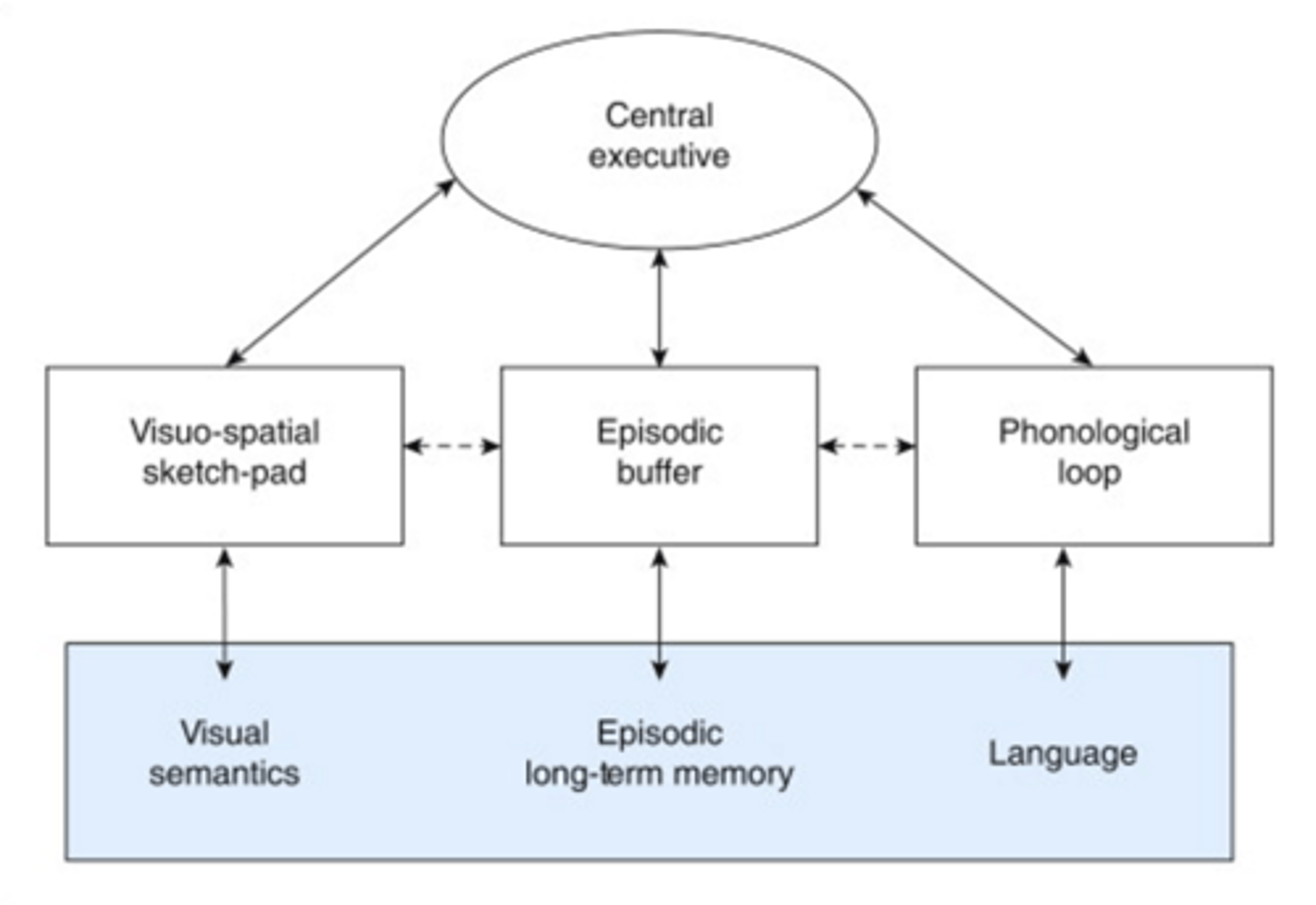3.2 Models of Memory (Working Memory Model)
1/23
There's no tags or description
Looks like no tags are added yet.
Name | Mastery | Learn | Test | Matching | Spaced |
|---|
No study sessions yet.
24 Terms
Memory
Memory refers to the processes by which we encode, store, and retrieve information over time.
STM isn't unitary?
Research revealed some phenomena that did not fit well with the view of the STM as a unitary system.
How did these results come about? (STM isn't unitary)
These 'uncomfortable' results came from research studies that utilized the dual-task technique.
What is the Dual-task technique?
In this technique, the participant is required to perform two memory operations simultaneously. For example, listen to list of words (auditory) and memorize series of shapes. (visual)
How does this prove STM isn't unitary?
If STM really is a unitary store, the two sets of stimuli should interfere with each other, so memory will be limited by 7 (+-2) of whatever modality. However, it was discovered that in some cases performing a simultaneous task does not interfere with memory performance.
Who wanted to explain the findings?
Baddeley and Hitch (1974)
How did Baddeley and Hitch (1974) do this?
In 1974, Baddeley and Hitch developed the working memory model. This model focuses on the structure of the STM.
Working Memory Model
Baddeley et al. (1975)

Original Model?
In the original model, working memory consists of a central executive that coordinates two subsystems: the visuospatial sketchpad and the phonological loop.
The visuospatial sketchpad?
The visuospatial sketchpad holds visual and spatial information
The phonological loop?
The phonological loop holds sound information and is further subdivided into the phonological store ("inner ear") and the articulatory rehearsal component ("inner voice").
The inner voice?
First, it turn visual into sounds.
Second, it allows the rehearsal of information held by the inner ear.
The central executive?
allocates resources between the visuospatial sketchpad and the phonological loop
Attention Control:
Automatic level: Schema based thinking
Supervisory Level:
planning and decision making
new strategies when old ones are not sufficient
Episodic Buffer?
Acts as a temporary and passive display store
it communicates with both long-term memory and the components of working memory.
Baddeley argues it is responsible for conscious awareness
Baddeley et al. (1975)
To assess evidence for the phonological loop by exploring whether working memory is more closely related to the number of items or the time it takes to say those items in mind.
Method
True Laboratory Experiment
Design
Independent Measures
Year
1975
Sampling Strategy
Convenience; 12 participants
IV
Engaged in suppression or were silent
DV
How many words were recalled in the correct order
Procedure
Two pools of 10 words each were produced.
16 word lists with 5 words per list
Lists presented at 1.5 second rate on a memory drum
Subjects instructed to recall the items in the order presented
Suppression condition:
Subjects counted repeatedly from one to eight
Began counting before the list appeared and stopped to recall as soon as the last item has been presented
No-suppression condition:
subjects simply told to try to remember the words
Findings
Without suppression, participants recalled short words significantly better than long words - showing a clear with length effect.
With articulatory suppression, the word length effect disappeared - recall of short and long words became equally poor
Conclusion
Phonological loop has a role in capacity of STM.
Amount of info is due to length of time to say not number of items